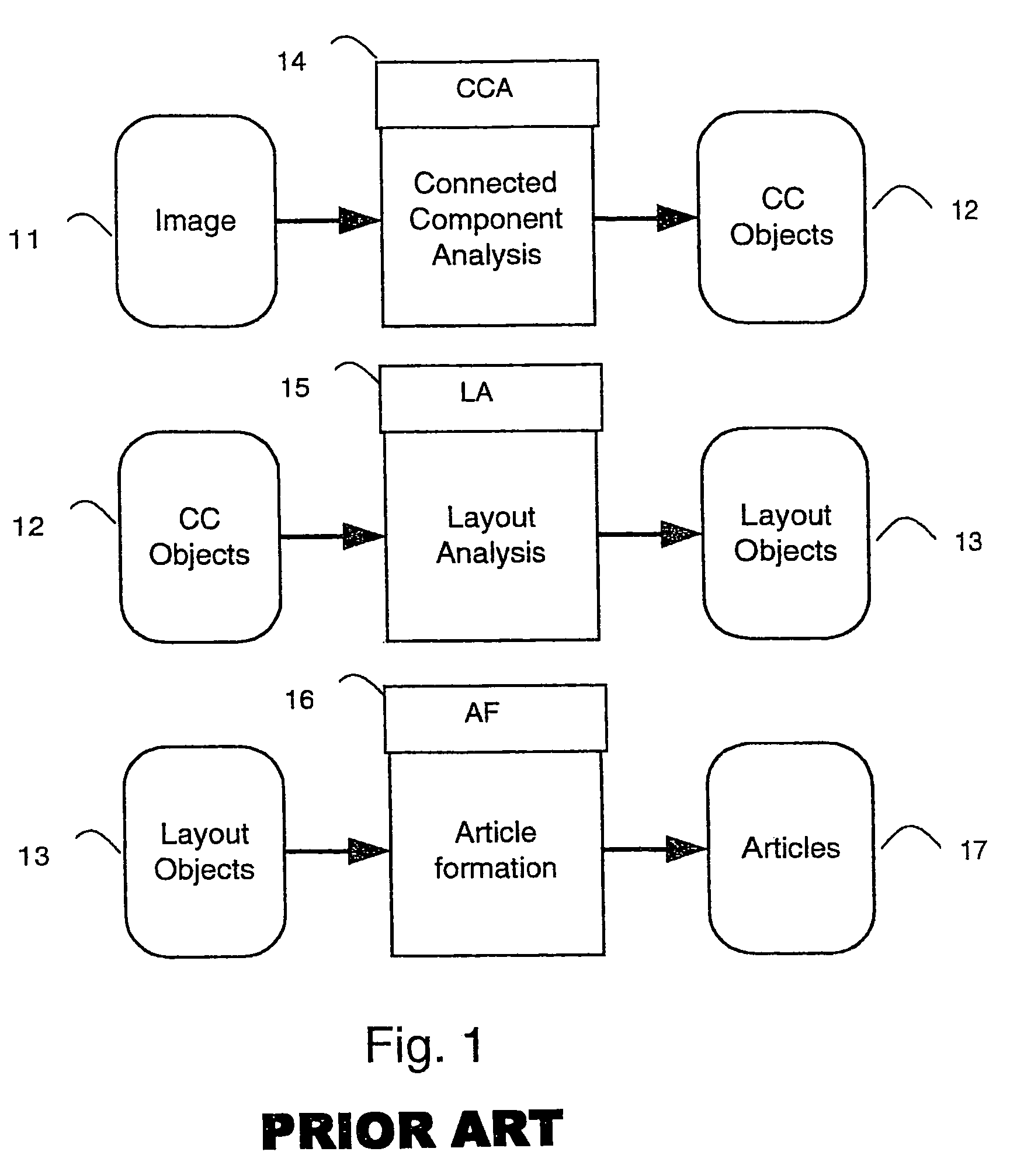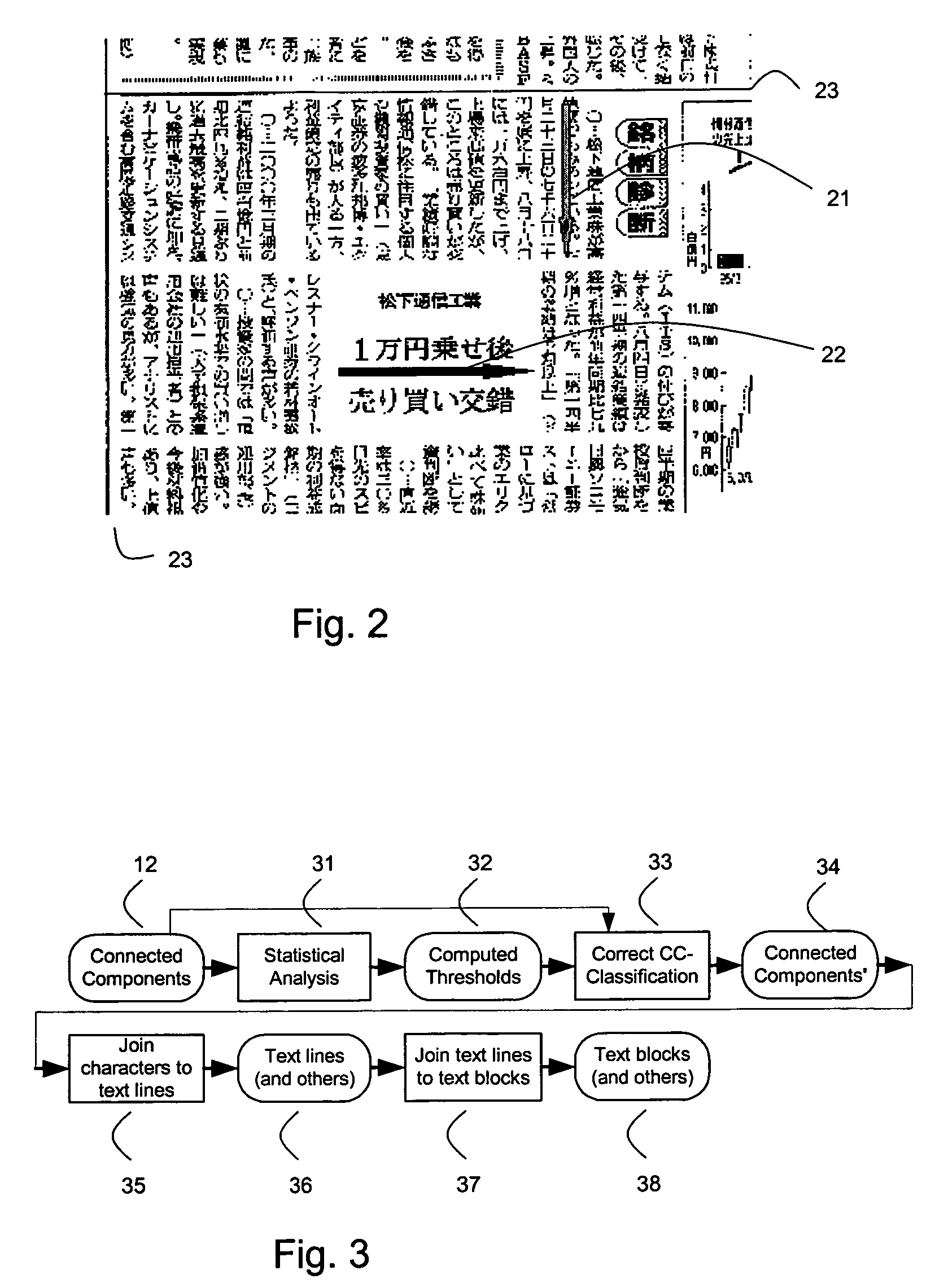Segmenting an image via a graph
a graph and image technology, applied in image data processing, image data processing details, instruments, etc., can solve the problems of not allowing computationally efficient further processing, wasting resources, and wasting resources, so as to achieve simple description, facilitate further processing steps, and improve efficiency
- Summary
- Abstract
- Description
- Claims
- Application Information
AI Technical Summary
Benefits of technology
Problems solved by technology
Method used
Image
Examples
Embodiment Construction
[0034]FIG. 1 shows an overview of an exemplary segmentation method showing three basic steps from known segmentation systems. Referring to FIG. 1, an input image 11 is processed in a CCA (Connected Component Analysis) module 14 that analyses the pixels of the image using Connected Component Analysis. First an original picture that may be a black-and-white, grayscale or coloured document, e.g. a newspaper page, is scanned, preferably in gray scale. Grayscale scanned pictures are halftoned for assigning a foreground value (e.g. black) or a background value (e.g. white) to each pixel. The CCA module 14 finds foreground elements in the image by detecting connected components (CC) of adjacent pixels having similar properties. An example of these first steps in the segmentation process are for instance described in U.S. Pat. No. 5,856,877.
[0035]The CCA module 14 produces as output CC Objects 12 that are connected components of connected foreground pixels. An LA (Layout Objects) module 15 ...
PUM
 Login to View More
Login to View More Abstract
Description
Claims
Application Information
 Login to View More
Login to View More - Generate Ideas
- Intellectual Property
- Life Sciences
- Materials
- Tech Scout
- Unparalleled Data Quality
- Higher Quality Content
- 60% Fewer Hallucinations
Browse by: Latest US Patents, China's latest patents, Technical Efficacy Thesaurus, Application Domain, Technology Topic, Popular Technical Reports.
© 2025 PatSnap. All rights reserved.Legal|Privacy policy|Modern Slavery Act Transparency Statement|Sitemap|About US| Contact US: help@patsnap.com



